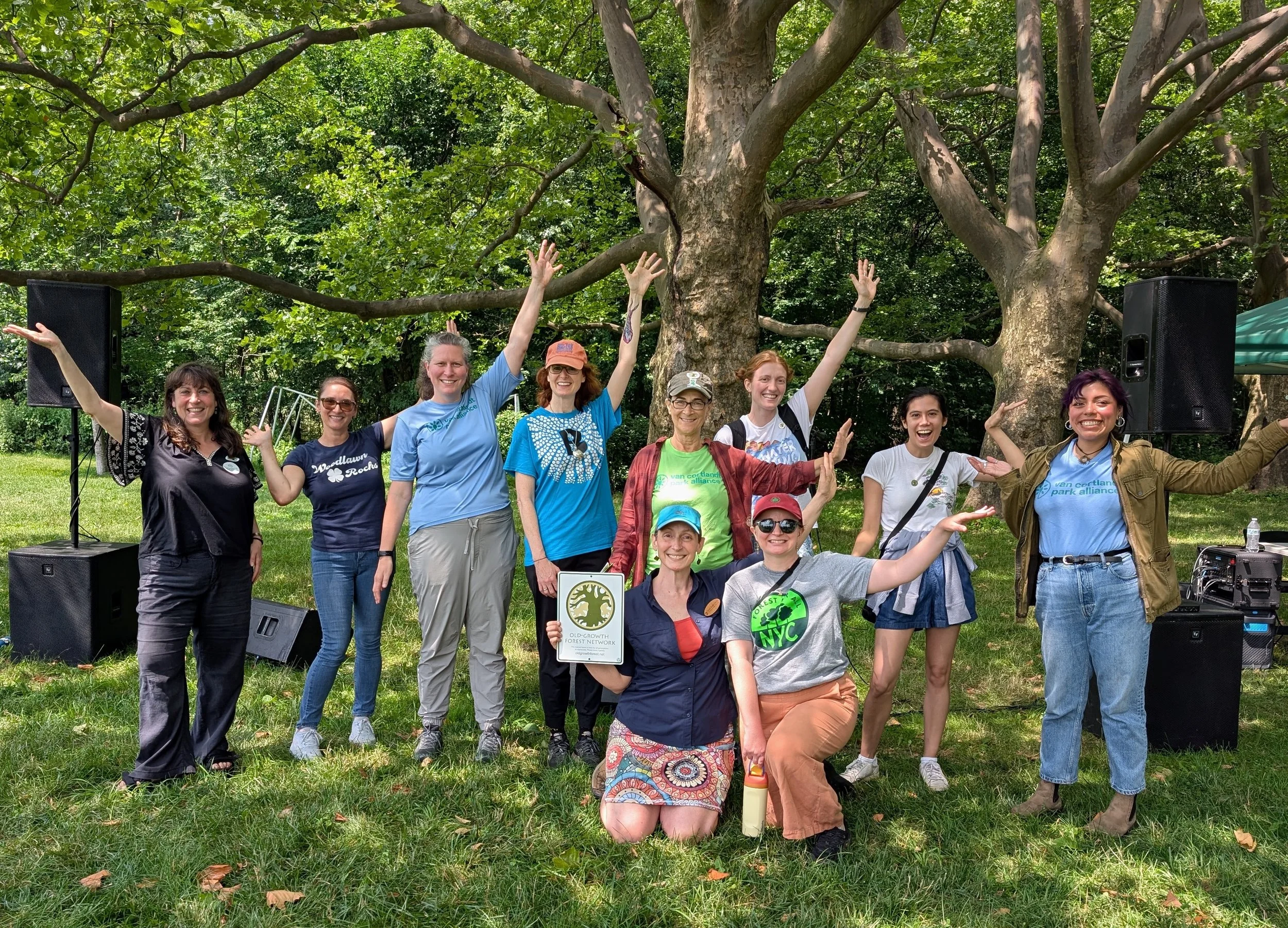Forever Wild Forests of New York City:
Van Cortlandt Park Preserve
Van Cortlandt Park, in the northwest Bronx, is a natural showcase featuring the last vestiges of New York City’s native woodlands and wetlands. Founded in 1888, its 1,146 acres abound with sites that are important to the region and nation.
Over half of Van Cortlandt Park, 640 acres, is designated a Forever Wild Preserve, a program established by the NYC Parks to protect New York City’s most ecologically valuable lands. Giving the natural areas Forever Wild Preserve status has helped shield them from damage by construction, development, and other activities. Three major habitats in the park—forests, wetlands, and meadows—are protected as Forever Wild. The core forests are located in the northern part of the park, on terrain varying from the spectacular rock outcrops that provide a glimpse of the forest’s underlying geology in the northwest, to low, wet areas in the northeast. Divided into the Northwest Forest, Croton Woods, and the Northeast Forest, Van Cortlandt’s forests contain some of the city’s oldest trees, with large oak, tulip, sweetgum, and sugar maples forming the canopy and spicebush, arrowwood, and maple-leaf viburnum among the shrub layer.
Northwest Forest
The largest forest in Van Cortlandt’s Forever Wild Preserve, the Northwest Forest, is a dramatic, 188-acre woodland atop a north-south ridge. Looking north from the three-quarter-mile-long grassy expanse of the Parade Ground along Broadway, a view of the forest unfolds. Growing on rocky heights, it harbors the highest concentrations of rare plants in the city. The wildflowers carpeting the forest floor are diverse and abundant and include bloodroot, trout lily, baneberry, wood sorrel, jewelweed, and numerous asters.
Northeast Forest
The Northeast Forest’s wetlands and bottomlands are ideal for sweetgum, red maple, and pin oak trees. These low, wet areas and vernal ponds support a plethora of wildlife, including wood frogs and spotted salamanders. Foundations of early homesteads and an Indian battleground imbue this forest with a rich sense of history.
Croton Woods
Croton Woods, named after the Old Croton Aqueduct, lies between the Northwest and Northeast Forests. Completed in 1842, the aqueduct once carried clean water from the Croton Reservoir in northern Westchester County to reservoirs in Central Park and Bryant Park, where the New York Public Library now stands. Today, the Old Croton Aqueduct Trail, a State Scenic and Historic Corridor, traverses the entire length of the forest from north to south. The walk combines natural beauty with traces of the aqueduct’s historic stone and brickwork, including an old, Egyptian-style gatehouse weir.







View All Network Forests in the State of New York
View All Network Forests in the U.S.
View All Forest Designations
